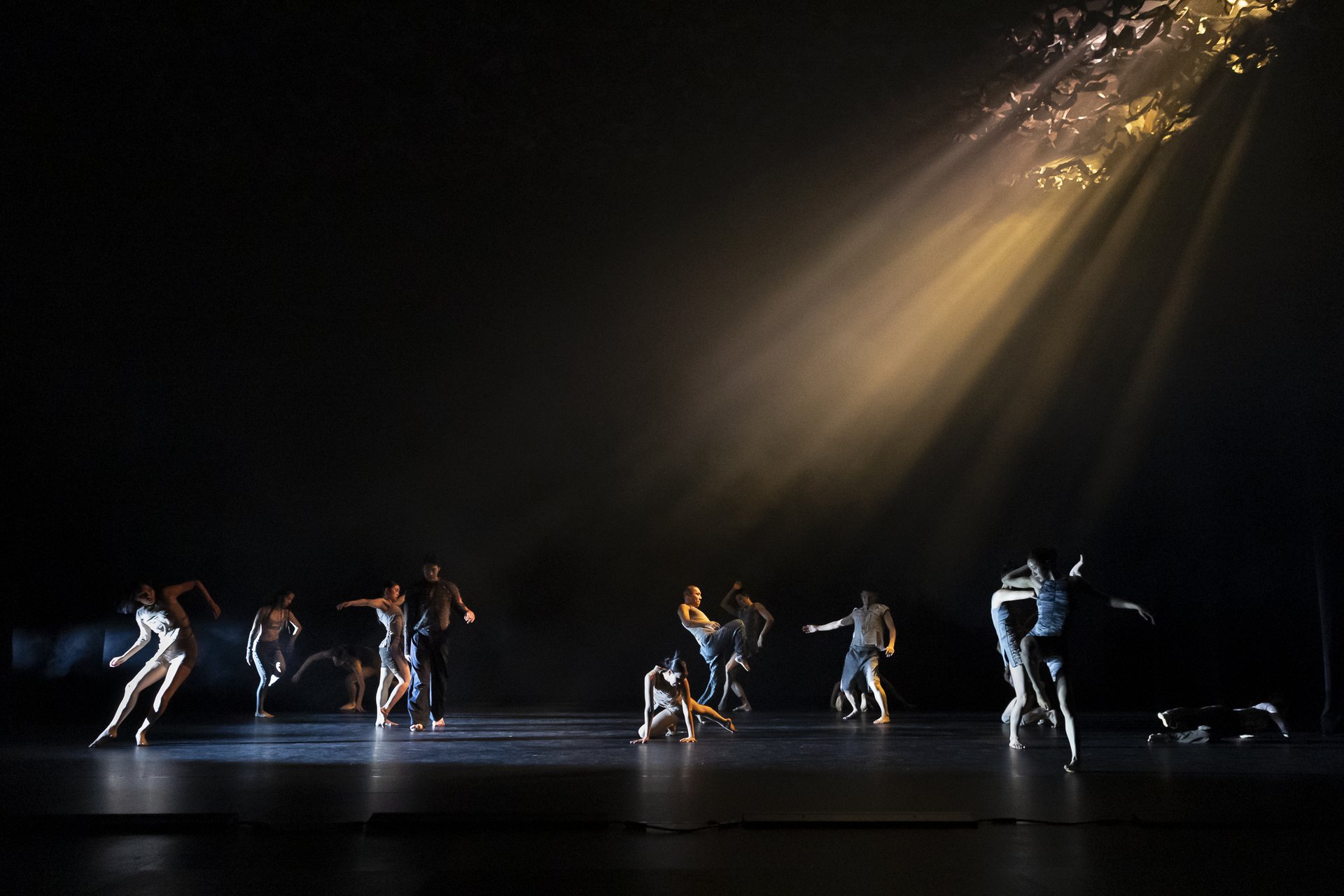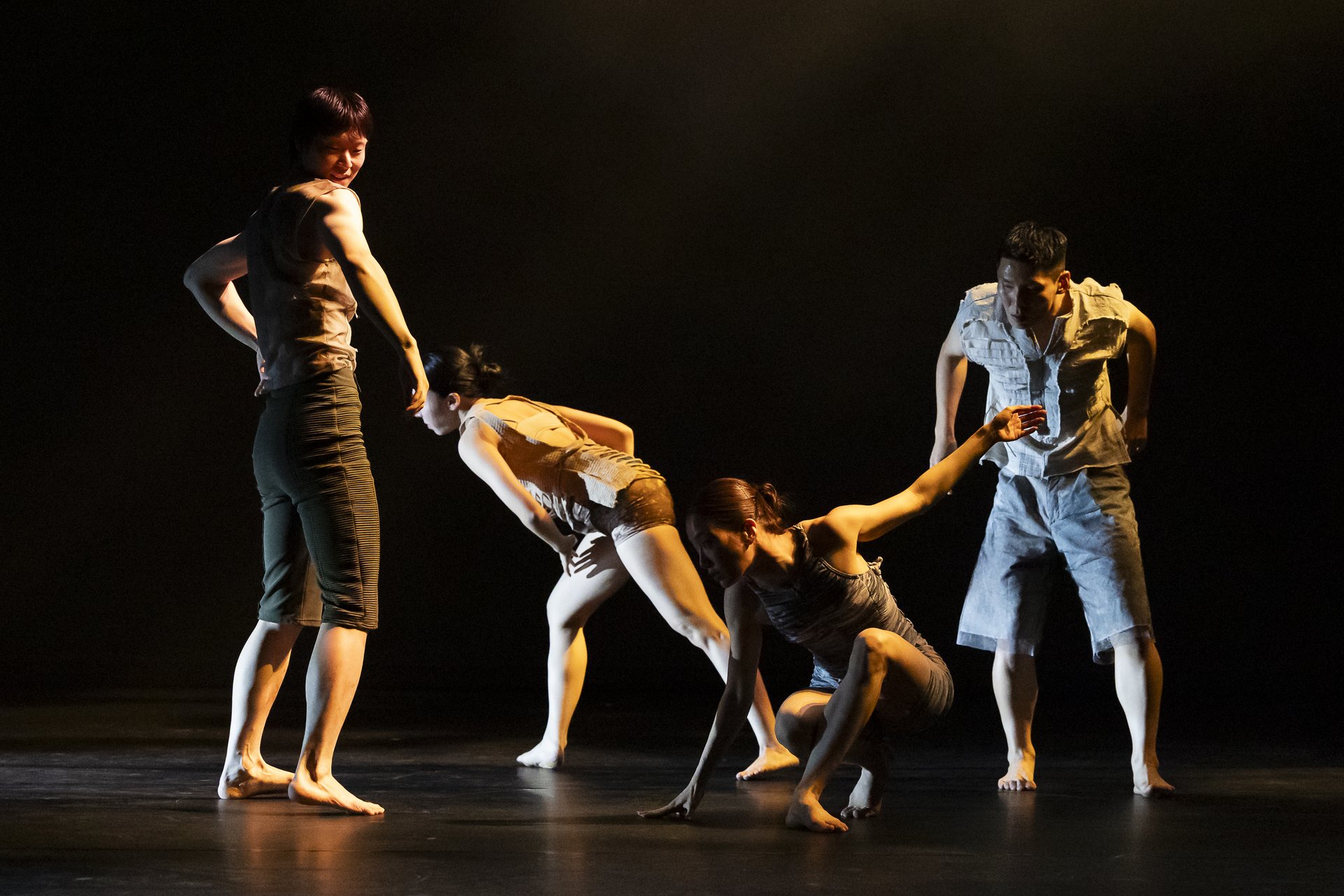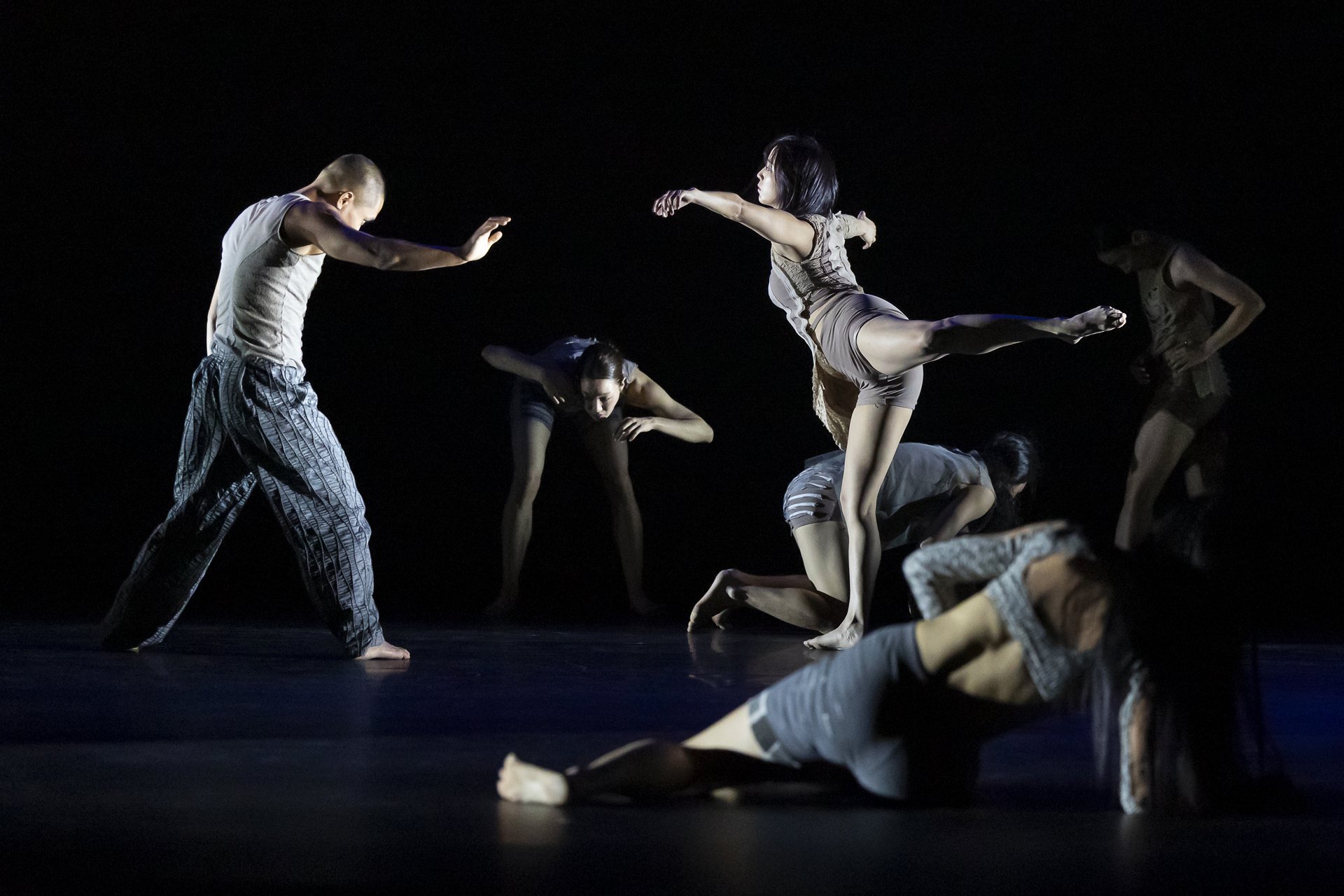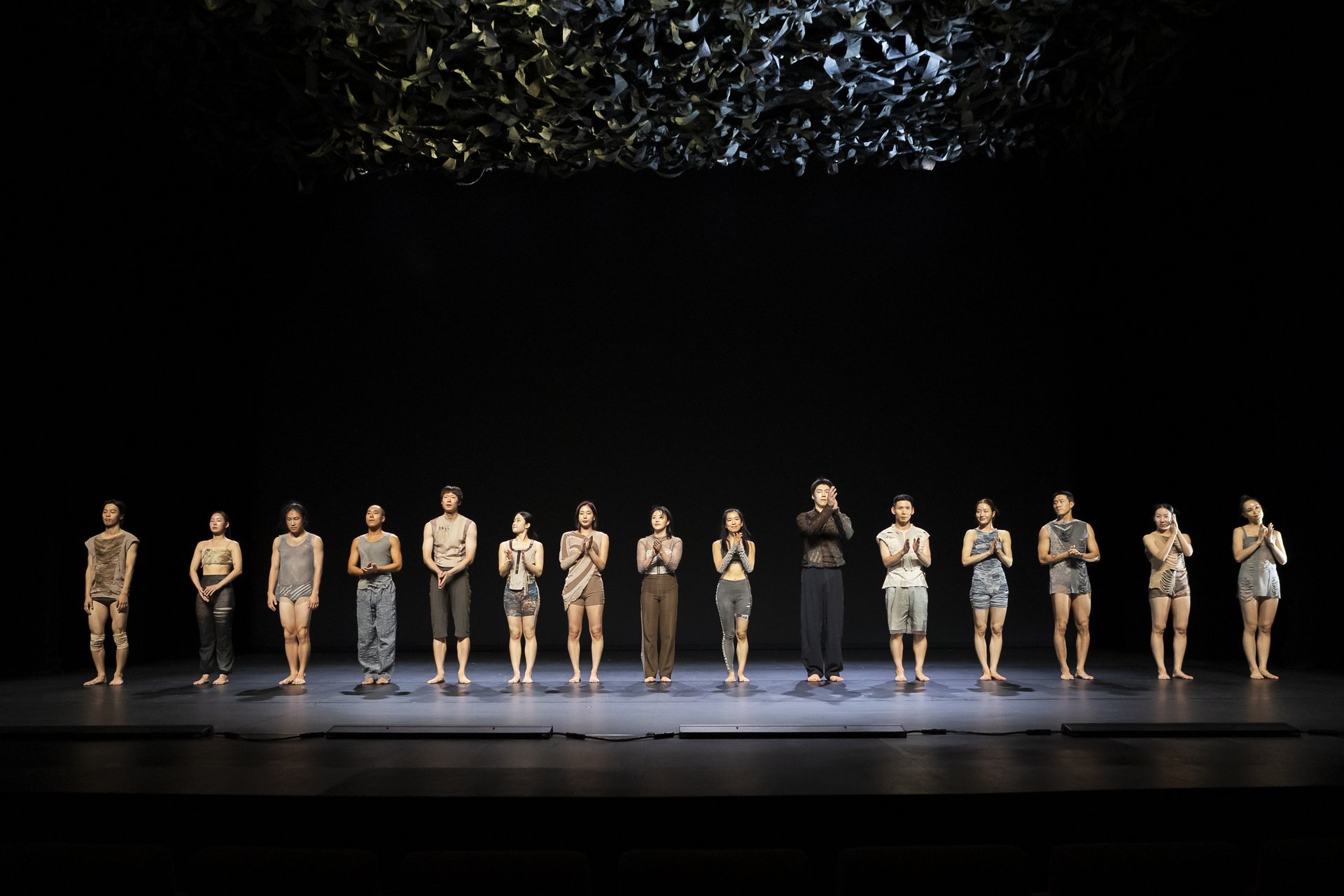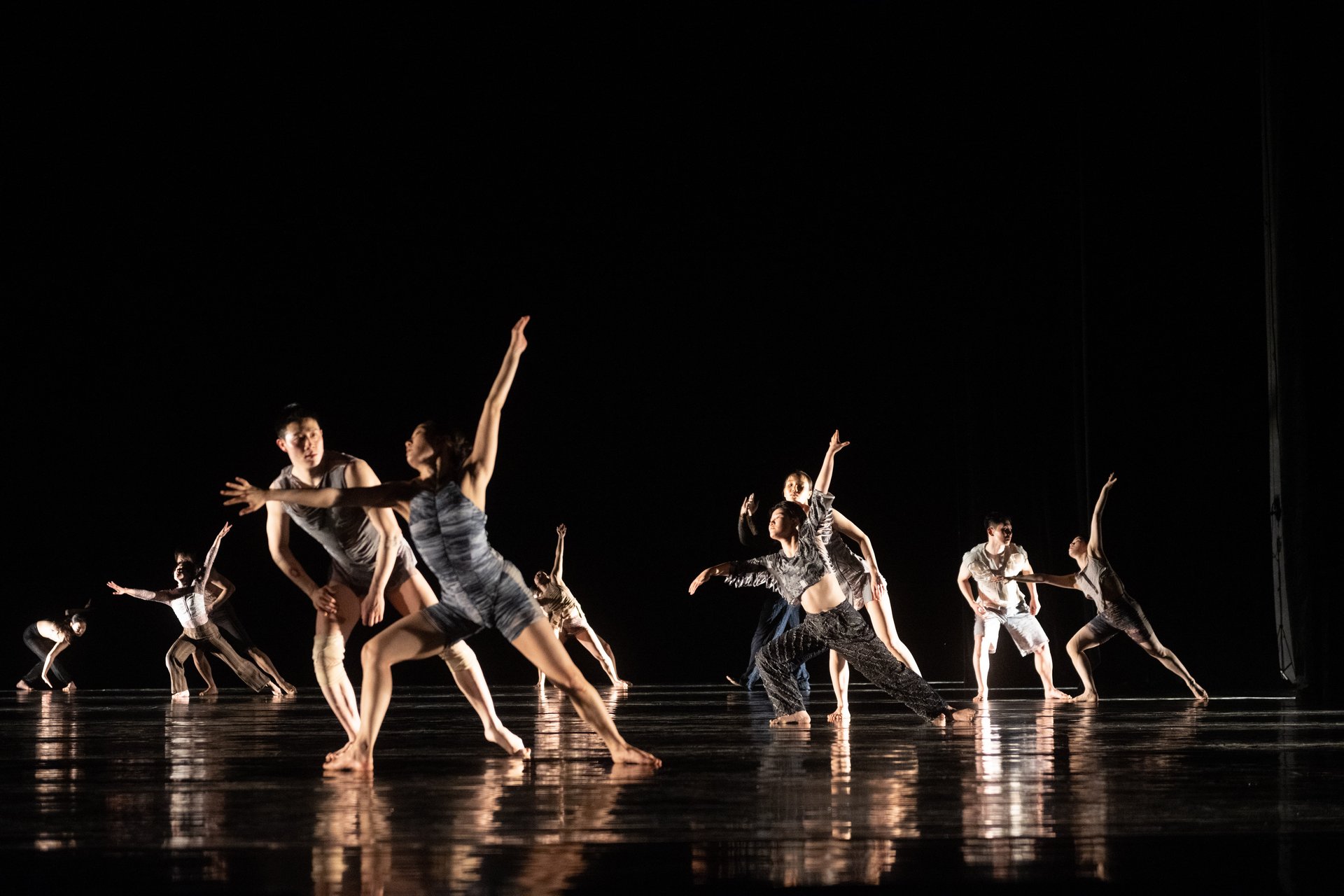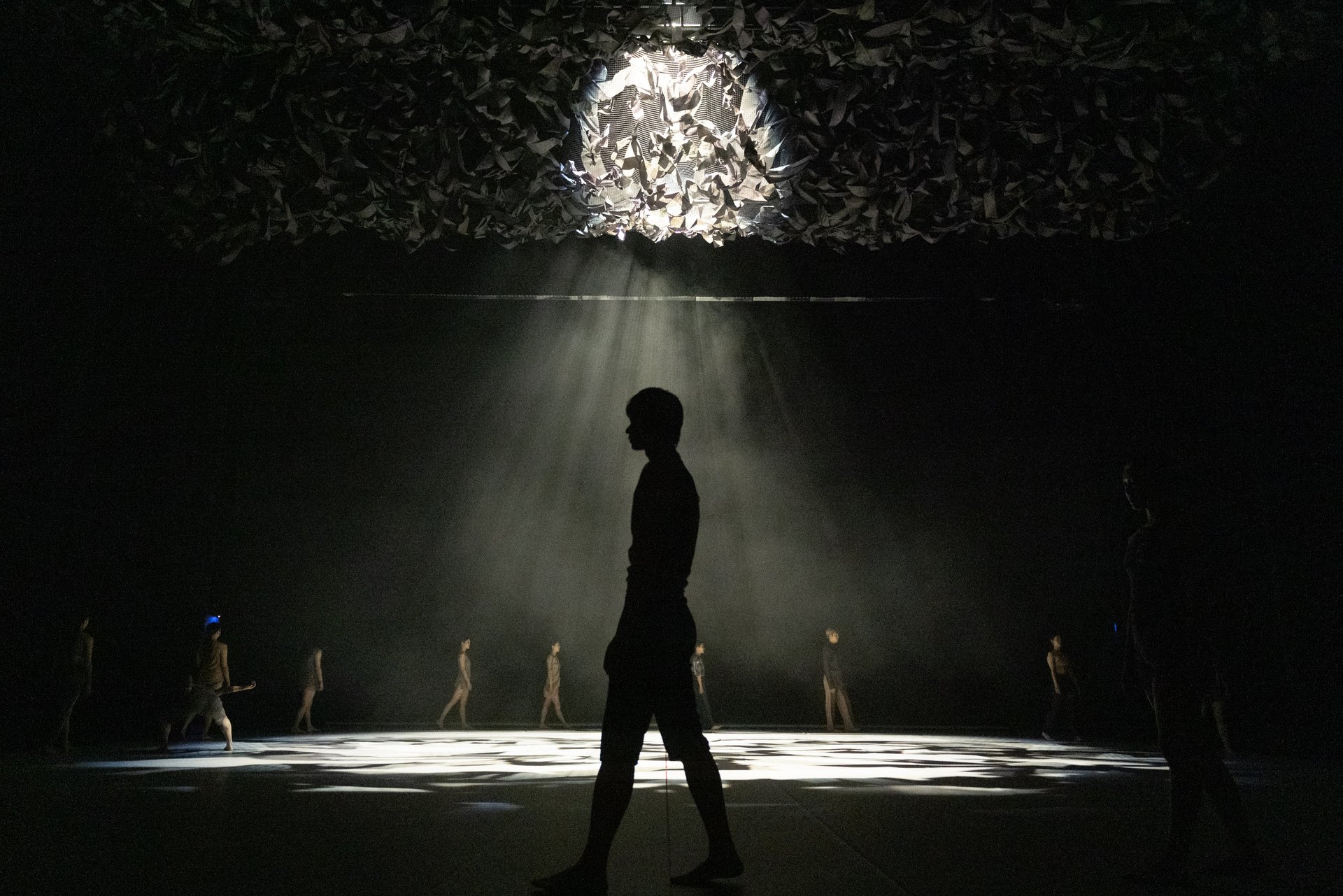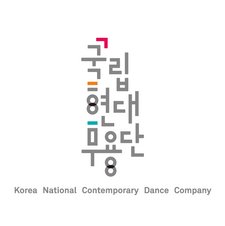In “Jungle 정글”, 15 dancers move through a foggy, mysterious stage, exploring life and its depth through dance. The choreography was created using an improvisation technique, guided by calm, hypnotic music.
Single strains of light scattered by fog enlighten the stage. Silhouettes move delicately through the twilight, stepping into the light only for a fleeting moment. The performance “Jungle” delves into the landscape of the jungle and follows its multi-layered associations to contemplate on the weight and depth of our existence. “Jungle” is a work with 15 dancers under the artistic direction of choreographer Kim Sungyong. Based on a movement research Sungyong developed, the performance allows the dancers to react to one another and modulate their movements, accompanied by the hypnotic sounds of composer Marihiko Hara.
www.kncdc.kr
Tickets
Full 38 / 33 / 25 / 17 €
Reduced 25 / 17 / 10 / 9 €
We offer a special youth ticket for this performance. Children and young people up to the age of 14 pay a special price of 5 € when accompanied by an adult ticket holder.
Additional service fees for booking online with Reservix apply.
Artist's Note by Korea National Contemporary Dance Company / Kim Sungyong
This work is based on the atypical movement research, “Process Init,”developed by the KNCDC’s artistic director Kim Sungyong.
Process Init allows viewers to experience Kim's unique approach, distinguishing his work from conventional choreographic practices through a process of integrating "it" "in" the dancers' body. "It" can represent anything the choreographer intends, enabling any kind of attempt.
1. Listen to Your Body
In Process Init, dancers create movements that their bodies need most, recognizing the condition of their bodies. The key is "to believe in their own choices and decisions" and "to get in again." The bodies of the dancers are different from one another, carrying their own history and story. Dancers can make completely new movements that did not exist before by focusing on what their individual bodies require. If they lose focus during this process, they are reminded to "get in again," which allows them to return to the beginning and start anew. As the movements intensify under the choreographer's direction, dancers expand their "movement vocabulary," creating various metaphors and symbols.
2. Cell Movement
The sequence of movements created by each dancer's physical environment is called "cell movement." Like a cell, this movement has the potential for transformation, variation and division into infinite movements. By observing the cell movements of other dancers, dancers attempt to adapt these movements into their own cell movement. They do not simply copy others' movements; instead, they transform, vary and divide them into their unique style. In this process, dancers take on the role of a "processor" rather than the title of a dancer, as they need to actively find movements and incorporate their individuality as active participants instead of passive performers. This reflects Artistic Director Kim's respect and consideration for the dancers. As this process repeats, the group weaves a well-organized texture of their individual movements as a whole. Process Init can be seen as a choreographic method that concentrates on movement, creating the foundation for an entirely new work depending on the conditions of the group of the processor and the choreographer.
3. Sharing
In Process Init, communication between dancers and choreographers is essential, accomplished through pre-sharing and post-sharing. Rudolf von Laban once said, "The body is a vessel for the mind." Movements that embody one's individuality inevitably reflect the mind, whether intentional or not. Sharing is necessary to resolve psychological conflicts that may arise during the course of sharing these movements and to understand the choreographer's intentions. This process contributes to the completion of a work through a two-way communication rather than a one-way approach.
– Korea National Contemporary Dance Company / Kim Sungyong


